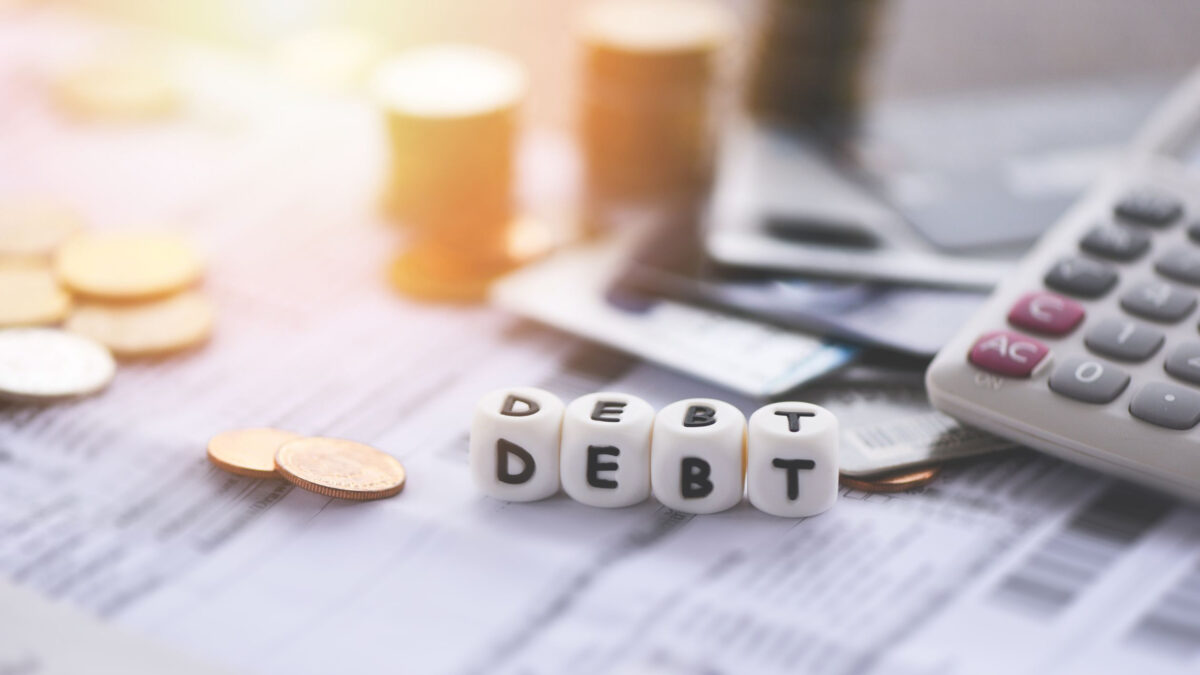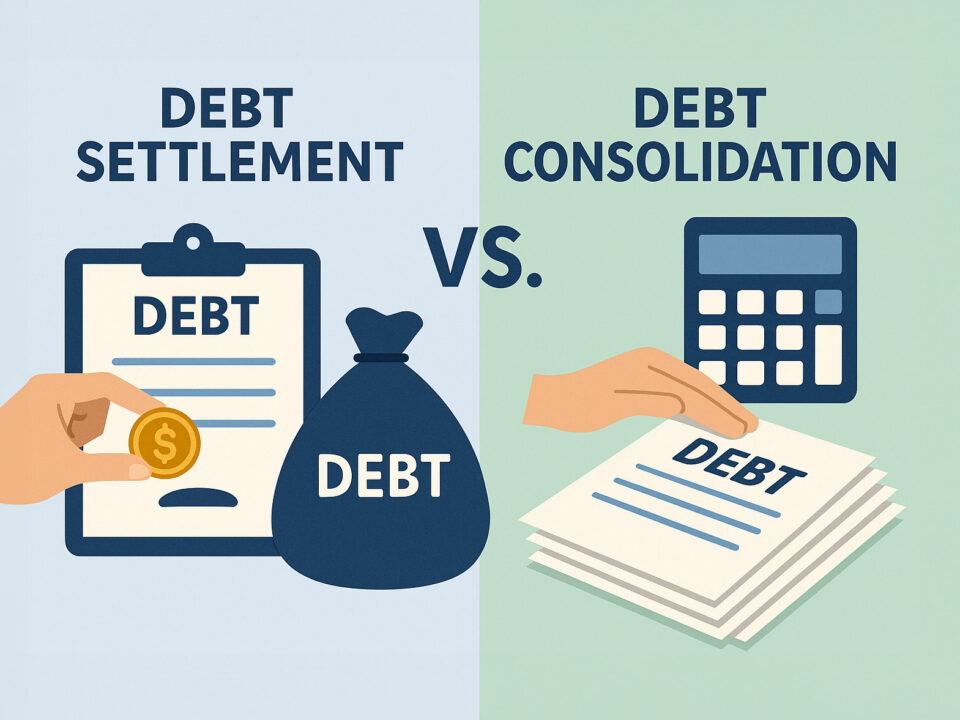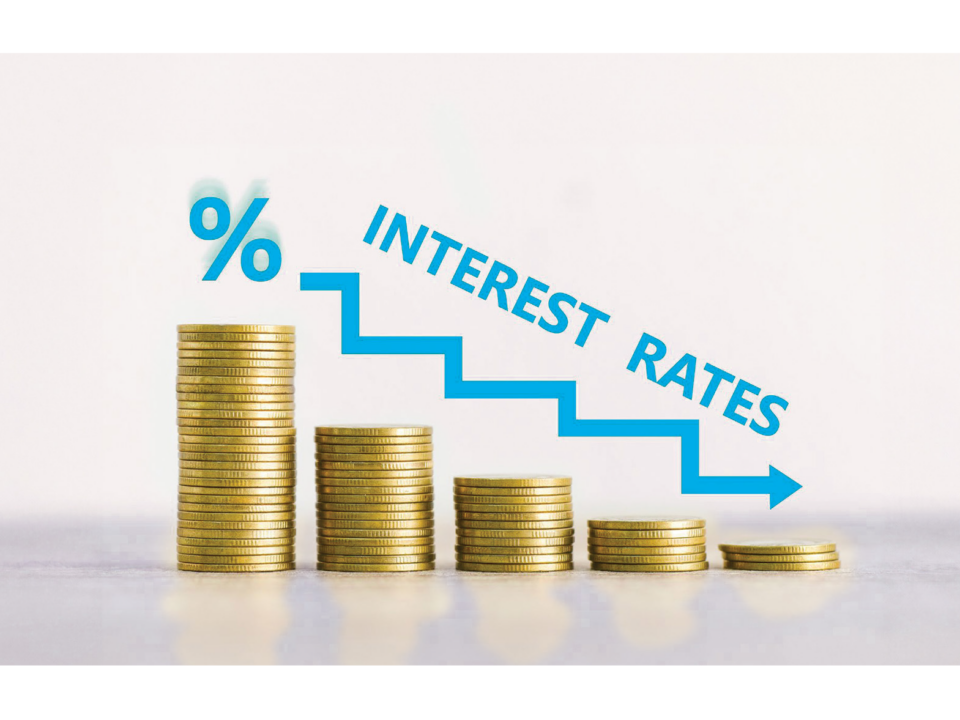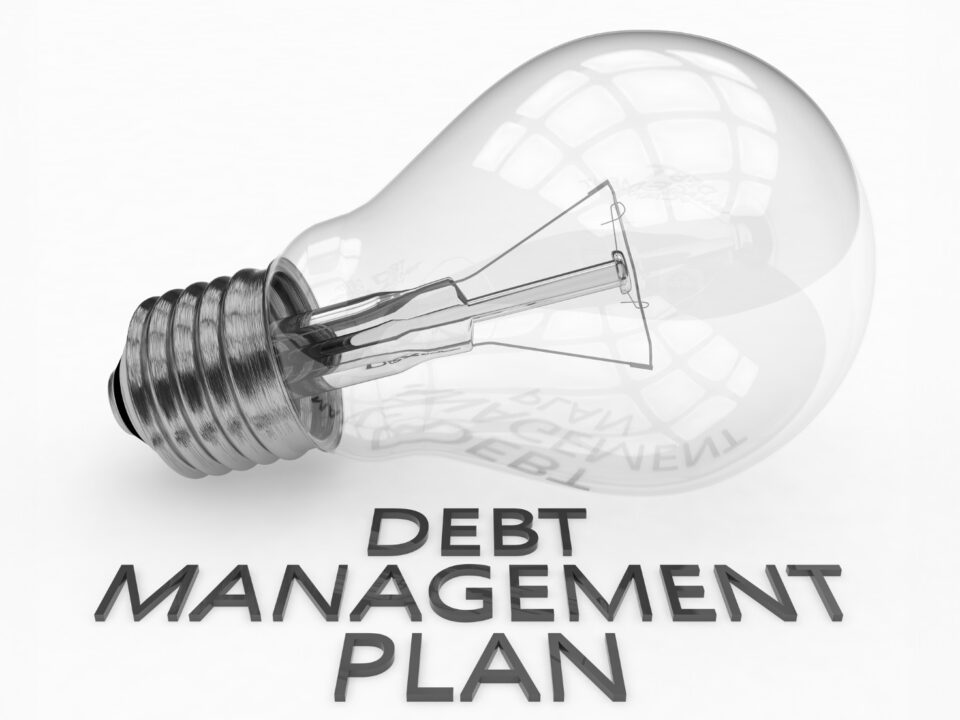
Debt-free living is a goal many strive to achieve, but maintaining it becomes particularly challenging in a high-inflation economy. As costs rise and interest rates fluctuate, even the most disciplined individuals may find their financial situation under pressure. The temptation to fall back into credit card debt or take on new loans can be overwhelming, but with the right strategies, it’s possible to sustain a debt-free life. This guide will equip you with practical steps to navigate inflationary challenges while staying committed to your long-term financial goals.
Understanding the Impact of Inflation on a Debt-Free Lifestyle
What is Inflation and How Does it Affect Your Finances?
Inflation is the gradual increase in prices over time, reducing the purchasing power of money. This means that what you could buy for a certain amount last year may cost more today. For those committed to debt-free living, inflation can challenge their financial discipline, making everyday expenses harder to manage without dipping into savings or, worse, accumulating new debt.
Inflation and Purchasing Power
As inflation rises, the value of your money decreases, meaning your savings and income won’t go as far. This can make it more difficult to stick to your budget, save for future goals, or avoid credit card debt for essential purchases.
The Relationship Between Inflation and Interest Rates
When inflation rises, interest rates often follow. This affects everything from mortgages to personal loans. Higher interest rates can make debt more expensive to service, especially for those carrying high-interest credit card or loan balances, and can increase monthly payments.
How Inflation Can Lead to New Debt
Increasing Cost of Living and Its Effect on Financial Goals
Inflation directly increases the cost of necessities like housing, groceries, and utilities, leaving less room in your budget for savings or debt-free living goals. This pressure can force you to adjust your financial plans, potentially delaying debt repayment or retirement savings.
Temptation to Use Credit Cards During Inflationary Periods
As inflation eats away at your purchasing power, the temptation to rely on credit cards for day-to-day expenses increases. While this might offer short-term relief, it often leads to accumulating high-interest credit card debt, making it harder to maintain a debt-free lifestyle in the long run.
Strategies to Maintain a Debt-Free Life During Inflation
Adjusting Your Budget to Cope with Rising Prices
Tracking Expenses and Optimizing Spending
In a high-inflation environment, it’s crucial to track every expense and identify areas where you can cut back. By understanding where your money goes, you can adjust spending habits and focus on maintaining your debt-free living goals.
Prioritizing Essential vs. Discretionary Spending
Differentiate between essential costs, like housing and groceries, and discretionary expenses, such as entertainment or dining out. Prioritize essentials to avoid relying on credit cards for non-necessities.
Reallocating Funds to Maintain Savings Goals
If inflation is cutting into your budget, consider reallocating funds from non-essential categories to ensure that you still contribute to savings and future financial goals. This will help you stay on track and avoid future debt.
Boosting Your Income to Offset Inflation
Side Gigs and Freelance Opportunities
One of the most effective ways to offset inflation is by increasing your income. Consider taking on a side gig or freelance work that fits within your schedule. The extra income can help you pay off debt faster or cover rising costs without dipping into savings.
Asking for Raises or Seeking Promotions
If you’re employed, evaluate your current position and consider asking for a raise or seeking a promotion. During inflationary times, employers may understand the need for salary adjustments to keep pace with the rising cost of living.
Investing Wisely in Low-Risk, Inflation-Protected Assets
To safeguard your savings against inflation, consider investing in low-risk, inflation-protected assets. These might include Treasury Inflation-Protected Securities (TIPS) or other financial instruments designed to keep pace with inflation, allowing you to save money while maintaining your debt-free status.
Managing Interest Rates and Loans in a High-Inflation Economy
Understanding How Rising Interest Rates Affect Debt-Free Living
Credit Card Debt and High-Interest Credit Cards
During periods of high inflation, interest rates on credit cards often increase, making any existing credit card debt more expensive to manage. Higher interest can lead to larger minimum payments, and if not carefully managed, could disrupt your debt-free living goals.
Impact on Mortgage and Student Loan Payments
For those with variable-rate mortgages or student loans, rising interest rates can significantly increase monthly payments. This can strain your budget, making it more challenging to stay debt-free.
Debt Consolidation as a Defensive Strategy
Pros and Cons of Debt Consolidation During Inflation
Debt consolidation can be a useful strategy in managing multiple high-interest debts during inflation. By combining debts into one loan with a lower interest rate, you may reduce your overall monthly payments. However, this approach can extend the loan term, meaning you pay more interest over time.
Lowering Interest Payments with Debt Consolidation
Consolidating high-interest debts, especially high-interest credit card balances, can help you avoid escalating interest payments, making it easier to stay on top of your debt and protect your debt-free life.
Avoiding Common Debt Traps in a High-Inflation Environment

In a high-inflation economy, staying vigilant about common debt traps is essential for maintaining debt-free living. Increased living costs can easily tempt people into making financial decisions that result in unnecessary debt.
Recognizing “Bad Debt” During Inflationary Times
How High-Interest Credit Cards Become a Trap
As interest rates rise, high-interest credit cards can quickly accumulate debt, especially if you carry a balance. The compounding interest makes it harder to escape, turning manageable debt into a burden.
Avoiding Impulse Purchases and Unnecessary Loans
Inflation may make it tempting to borrow for immediate needs, but unnecessary loans and impulse purchases can lead to long-term debt. Avoid making quick financial decisions that aren’t essential, as they can undermine your debt-free life goals.
The Danger of Minimum Payments and Interest Accumulation
How Making Only Minimum Payments Prolongs Debt
Paying only the minimum payment on credit cards or loans increases the total interest paid over time, slowing your progress toward financial freedom. This makes it much harder to pay off debt, particularly during inflation.
The Impact of Interest Payments on Your Financial Situation
As inflation drives interest rates up, even small balances can accrue significant interest payments. Over time, these costs reduce your ability to save or invest, putting strain on your overall financial situation and making it challenging to live debt-free.
Using the Debt Snowball and Debt Avalanche Methods to Stay Debt-Free
Both the debt snowball and debt avalanche methods are highly effective strategies for staying debt-free. Each approach has its unique benefits, depending on your financial situation and emotional preferences.
The Debt Snowball Method for Financial Success
How to Tackle Small Debts First
The debt snowball method focuses on paying off your smallest debts first, regardless of interest rate. By eliminating smaller debts, you gain quick wins that provide motivation to stay on track.
Staying Motivated with Quick Wins
The sense of accomplishment from quickly paying off small debts keeps you motivated to continue on your debt-free journey. This method is particularly effective for those who need psychological boosts to stick with their plan.
The Debt Avalanche Method for Maximizing Savings
Focusing on the Highest Interest Loans First
In contrast, the debt avalanche method prioritizes paying off debts with the highest interest first, which minimizes the amount of interest you pay over time.
Reducing Long-Term Interest Payments with the Debt Avalanche Method
By focusing on high-interest debt, such as credit card debt or other loans with elevated rates, you reduce overall interest payments and save more money in the long run. This method is ideal for those looking to maximize their financial savings while remaining debt-free.
Building Financial Resilience and Long-Term Stability
Maintaining a debt-free lifestyle requires building financial resilience to withstand economic pressures, such as inflation. Establishing clear financial goals and smart financial habits is key to long-term stability.
Setting Clear Financial Goals to Stay Debt-Free
How to Establish Realistic Financial Goals
To achieve long-term financial success, start by setting clear, realistic goals that align with your income and lifestyle. These goals should focus on saving, reducing expenses, and avoiding future debt.
Creating an Emergency Fund to Avoid Future Debt
An essential part of staying debt-free is having an emergency fund. This fund provides a financial cushion during unexpected expenses, such as medical bills or car repairs, helping you avoid taking on bad debt.
Save Money Through Smart Financial Planning
Allocating Resources to Protect Against Inflationary Pressures
As inflation rises, it’s important to adjust your budget to protect your savings. This can mean cutting unnecessary expenses or reassigning funds to ensure essential financial goals are still met.
Investing in Low-Risk Savings or Inflation-Protected Securities
Consider investing in low-risk, inflation-protected securities, such as Treasury Inflation-Protected Securities (TIPS). These investments are designed to grow with inflation, helping protect your savings and ensuring long-term financial stability without risking credit card debt or other forms of bad debt.
Maintaining a Debt-Free Lifestyle While Planning for the Future
A key to sustaining debt-free living is balancing your short-term financial needs with your long-term goals. This requires careful planning and regular adjustments as life evolves.
Living Debt-Free: How to Plan for Retirement and Other Long-Term Goals
Balancing Retirement Savings and Short-Term Goals
While saving for the future is essential, you must also manage present needs. Allocating funds between retirement savings and immediate goals, like paying off debt, ensures financial security at every stage of life.
Planning for Significant Life Events (Education, Homeownership)
Significant milestones like education or buying a home require strategic financial planning. Achieving these goals while remaining debt-free involves disciplined saving and careful investment in resources that help you avoid taking on new debt.
Debt-Free Living and Lifestyle Adjustments
Simplifying Your Lifestyle to Fit a Debt-Free Model
Maintaining a debt-free lifestyle often requires simplifying your expenses. This could mean living below your means, reducing unnecessary subscriptions, or avoiding luxury purchases.
Minimizing Lifestyle Inflation as Income Increases
As your income grows, it’s easy to fall into the trap of lifestyle inflation, where increased earnings lead to increased spending. To remain debt-free, be mindful of maintaining a frugal mindset and investing any extra income in savings or retirement accounts rather than increasing your living expenses.
Final Tips for Debt-Free Living in a High-Inflation Economy
Monitor Your Financial Situation Regularly
Reviewing Your Monthly Payment Plans
Regularly review your monthly payment plans to ensure they align with your financial goals. Adjustments may be needed as inflation affects your budget, ensuring you stay debt-free.
Regularly Assessing Your Debt-Free Progress
Evaluate your debt-free progress by tracking your savings and spending habits. This helps you stay proactive about maintaining financial stability in changing economic conditions.
Avoid High-Interest Credit Card Debt
How to Make Smart Decisions to Avoid Credit Card Debt
Be mindful when using credit cards, especially during inflationary periods. Choose payment options that prevent high-interest debt accumulation.
Managing Unexpected Expenses Without Accumulating Debt
Build an emergency fund to handle unforeseen costs, avoiding reliance on high-interest credit cards or loans, which can derail your debt-free life.
In today’s high-inflation economy, maintaining a debt-free lifestyle requires commitment and a proactive approach. By staying informed and disciplined, you can achieve your financial goals and protect your future. If you’re looking for personalized strategies to help navigate these challenges, Prudent Financial Solutions offers tailored debt-relief services designed to support you in achieving long-term financial stability. Take the first step by scheduling a free consultation or financial review, and stay on track toward a debt-free, secure future.
You Might Also Like:
Planning in Your 20s, 30s, 40s, and Beyond, Maximizing Your Retirement Savings
Why You Need an Emergency Fund and How to Start One
Maximize Your Savings: How to Use Debt Repayment Calculators Effectively
Financial Planning Decoded: From Budgets to Investments
Getting a Debt Consolidation Loan with Bad Credit in California
Prepare Now for Higher HELOC Payments: 5 Tips to Get Ready



